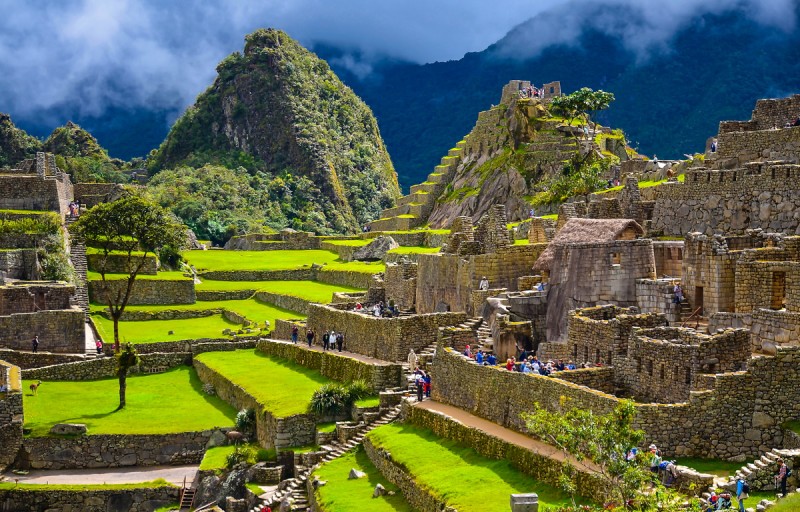
Machu Picchu is an ancient Incan citadel nestled high in the Andes Mountains of Peru. This awe-inspiring archaeological site has captivated the world with its stunning beauty and historical significance. In this article, we will delve into the mysterious location of Machu Picchu, exploring its history, significance, and the best ways to experience this wonder of the world.
The Location of Machu Picchu:
Machu Picchu is located in the eastern part of the Andes Mountains in Peru, South America. Situated at an altitude of approximately 2,430 meters (7,970 feet) above sea level, the site is strategically positioned amidst the lush greenery of the cloud forest. This unique setting adds to the mystique of Machu Picchu and provides a breathtaking backdrop for visitors.
Discovery and Exploration:
Machu Picchu was rediscovered by American historian and explorer Hiram Bingham in 1911. The site's remote location and its hidden nature amongst the dense vegetation contributed to its obscurity for centuries. Since its discovery, archaeologists have been tirelessly studying the site, uncovering invaluable insights into the lives of the Inca civilization.
How to Get There:
To reach Machu Picchu, travelers typically start their journey from the city of Cusco, which is well-connected by air and road. From Cusco, various transportation options, including trains and buses, are available to take visitors to the entrance of Machu Picchu. Another popular and adventurous route is the famous Inca Trail trek, which allows hikers to immerse themselves in the breathtaking Andean landscapes on their way to the ancient citadel.
The Architecture and Layout of Machu Picchu:
Machu Picchu's architectural design showcases the ingenuity of the Inca civilization. The site is divided into two main areas: the agricultural sector and the urban sector. The agricultural terraces, designed to adapt to the mountainous terrain, demonstrate the Incas' expertise in engineering and agriculture. The urban sector consists of temples, residential buildings, and plazas, all carefully crafted with polished stone blocks without the use of mortar.
The Purpose of Machu Picchu:
The true purpose of Machu Picchu remains a subject of scholarly debate and speculation. Some theories suggest that it served as an estate for the Inca emperor Pachacuti, while others propose that it held religious and ceremonial significance. The precise function of Machu Picchu continues to be a captivating mystery, inviting visitors to ponder its secrets.
Preservation Efforts:
Recognizing its cultural and historical importance, Machu Picchu was designated a UNESCO World Heritage Site in 1983. However, the growing influx of tourists has put a strain on the delicate site. To ensure its preservation for future generations, various conservation efforts and visitor management strategies have been implemented.
Fascinating Facts and Myths:
Machu Picchu is steeped in intriguing myths and legends, adding an air of mysticism to the already awe-inspiring place. From stories of hidden treasure to legends of spiritual energy, these tales continue to enchant visitors and researchers alike.
Sustainable Tourism at Machu Picchu:
As one of the most visited tourist destinations in the world, Machu Picchu faces challenges in maintaining its cultural and ecological integrity. Sustainable tourism practices, such as limiting visitor numbers and promoting responsible travel, are crucial in safeguarding this iconic site.
Visiting Machu Picchu: What to Expect:
Before embarking on a journey to Machu Picchu, travelers should prepare for the varying climate, high altitude, and physically demanding terrain. Understanding the rules and regulations set forth by the Peruvian authorities is also essential to ensure a safe and respectful visit.
Captivating Views and Photography:
The panoramic views from Machu Picchu are nothing short of breathtaking. From the vantage points within the site, visitors can witness the sheer magnificence of the surrounding Andes and the Urubamba River below. Capturing the beauty of this ancient citadel in photographs requires skill and an appreciation for the natural splendor.
Alternative Experiences near Machu Picchu:
While Machu Picchu is the crown jewel of Inca ruins, there are several other lesser-known archaeological sites nearby that offer unique insights into the Inca civilization. Exploring these sites provides a more comprehensive understanding of the fascinating history of the Andean region.
The Mystery of the Incas:
The Inca civilization, known for its advanced engineering and astronomical knowledge, left behind a legacy that continues to captivate modern minds. Unraveling the enigma of the Incas and understanding their way of life adds depth to the experience of visiting Machu Picchu.
Machu Picchu is not only a UNESCO World Heritage Site but also a testament to the brilliance of the Inca civilization. Its location in the Andean mountains adds to its allure, making it a must-visit destination for history enthusiasts, adventure seekers, and spiritual travelers alike. Preserving this ancient wonder for future generations requires a collective effort to embrace sustainable tourism practices and protect the rich cultural heritage it represents.
Love on the Road: Inspirational Travel Quotes for Couples
Exploring the Timeless Beauty of Rome
Khalsa Diwan Sikh Temple in Hong Kong: Preserving Sikh Heritage in the Far East